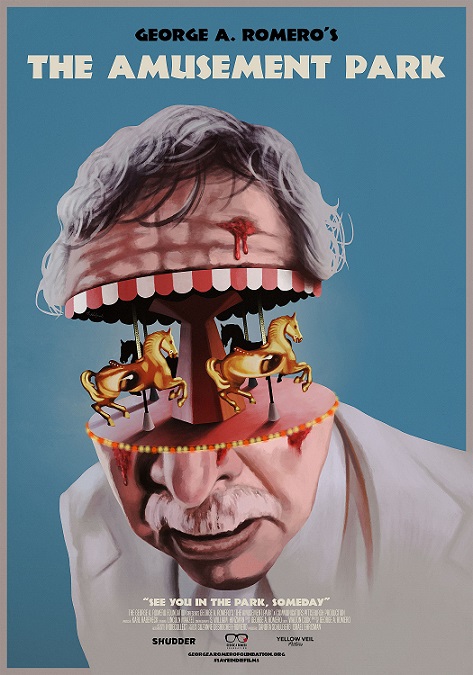
This film will be available exclusively on Shudder on June 8th.
Writer/director George A. Romero is a legend among horror fans, having created genre classics like Night of the Living Dead, Dawn of the Dead, Creepshow and Day of the Dead, as well as many other compelling features. He passed away in 2017, but his fan base remains as strong and as passionate as ever. That’s why it is remarkable that a little “lost” title from the filmmaker has recently surfaced and is now being made available.
After wowing audiences with the 1968 zombie classic Night of the Living Dead, Romero acquired funding for more personal independent movies like There’s Always Vanilla and Season of the Witch. While the end results were interesting, they were not profitable follow-ups. As a result, the filmmaker continued making documentaries and taking on smaller assignments at his production company. In 1973, he was given funding by the Lutheran Society to create a short detailing the trials of aging. The results were The Amusement Park, a 52-minute tale packed with surreal and haunting imagery. In the end, the finished product disturbed its financiers, who didn’t end up releasing it.
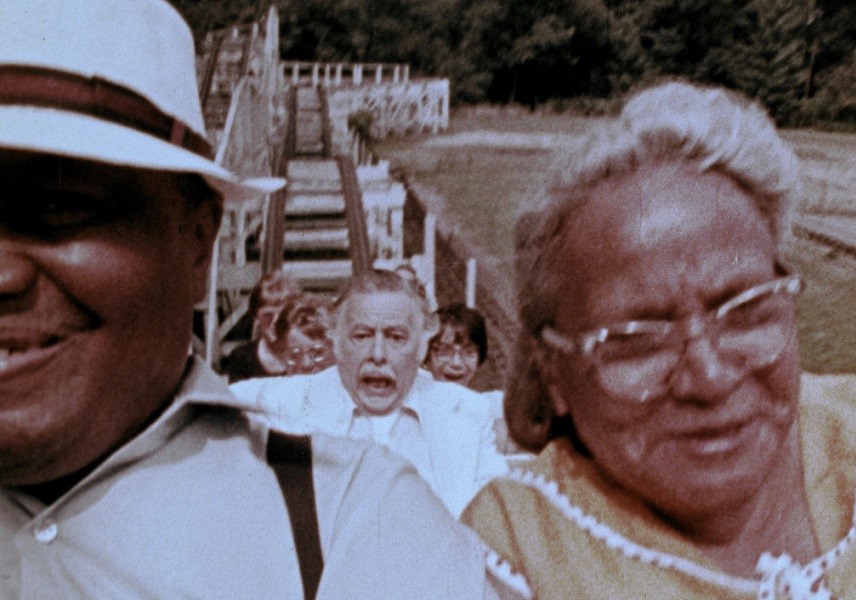
Thankfully, a copy was discovered a few years ago and the picture has now been digitally restored for posterity. While this is an educational film made on a shoestring budget, it doesn’t play like one of those unintentionally funny yarns you might have seen in a high school classroom. This is a surprisingly creative effort that is also very recognizable as an early Romero work. It presents a very dark and unsettling picture of the end of a life that makes a lasting impression and delivers its points effectively.
The movie opens with lead actor Lincoln Maazel giving something of an explanation of what will follow and some of the ideas being presented. It begins with a beaten and bruised figure sitting alone in an eerie “white room”. When the white-suited figure played by Maazel approaches to begin a conversation with the confused individual, the troubled person refuses to go out. The man in the suit then walks through a door alone into an amusement park. Unfortunately, this isn’t a Disneyesque place, as the well-dressed figure quickly finds himself mistreated and misunderstood by those around him.
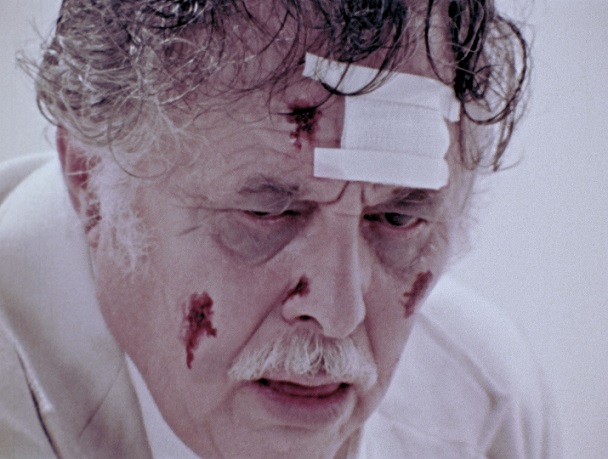
Instead of taking a conservative approach to the material and presenting actual situations that a senior endures on a daily basis, Romero uses the park itself to deliver the film’s message. Seniors stumbling through the crowd are all injured to some degree and younger attendees seem uninterested in the plights of their elders. In fact, in one scene the man in the white suit is unjustly accused of being a pervert after conversing briefly with a youngster. And signage around the park isn’t really about the actual rides, instead posting high-end prices for important health services that most of the elders featured can’t afford.
The cleverest touch is what is done with the attractions themselves. While they may initially seem like happy backdrops, each serves as a metaphor for actual problems seniors must contend with. A bumper car ride turns into an accident scene involving an older couple. They are treated with disdain and prejudice not only by the younger man who caused the crash, but the cop reporting on it as well (Romero himself makes a cameo in this episode). Food stands become an example of how the wealthy are doted upon, leaving the protagonist and others to scramble for remaining scraps of food. Medical care, or the lack thereof is also addressed. As these injustices continue, we witness the initially positive lead being beaten down and becoming more disoriented as time passes.
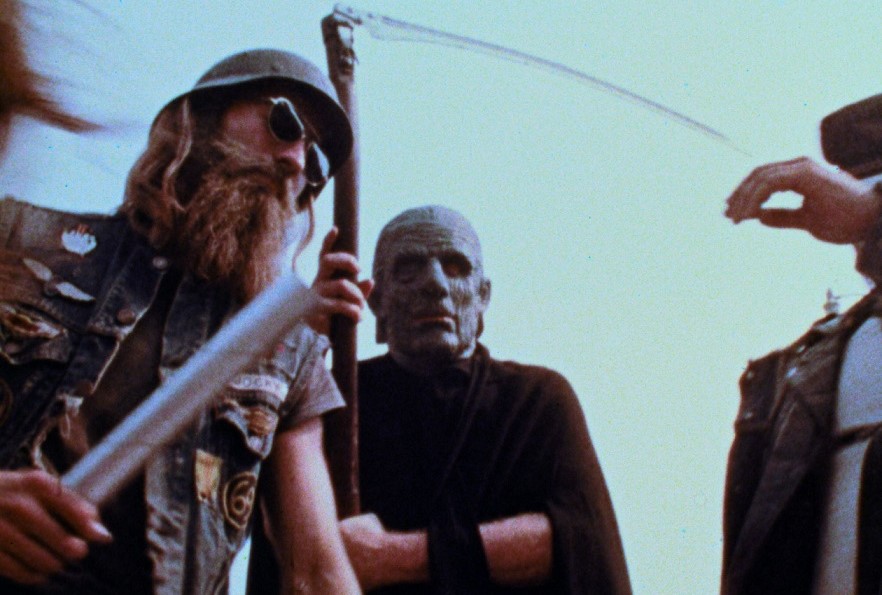
Each scenario is eerie, surreal and harrowing, doing an excellent job of depicting how the elderly are forgotten and mistreated. There’s even an interesting moment in which the lead tries to get assistance from members of a local church at a park booth, who decide to close for the day as he approaches and leave him unassisted (one wonders if this bit may have contributed to the Lutheran investors rejecting the finished product).
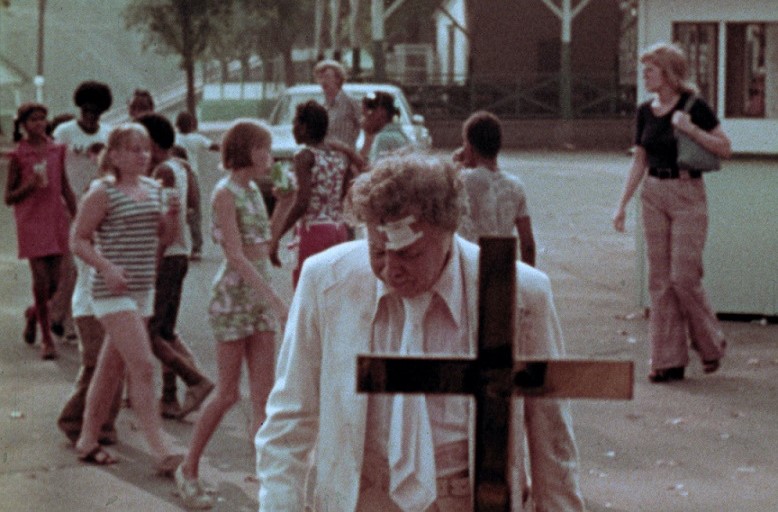
While the budget is limited, the park itself and the attraction lend production value to the proceedings. Romero has always been a master at editing and he uses quick cuts and odd angles to discombobulate viewers, just as the main character is. And just in case youngsters watching don’t get the point, one of the striking scenarios presents a young couple seeing their future from a fortune teller. The movie cleverly asserts that we should all strive to do more for seniors and keep their minds and lives active… not only for their benefit, but for ours as well (as we all will be in a similar situation in the future).
Romero isn’t always subtle here and the subject matter is relentlessly grim and downbeat, but he uses a creative approach to this educational film that ends up adding a novel element. We experience all the confusion along with the protagonist, as this approach packs an unexpected emotional wallop by the close. The Amusement Park is a kaleidoscopic nightmare one can certainly see how technical elements would be further developed in titles like Martin. Despite the limited funding, it’s clear that a skilled individual was working behind the camera and the film makes its point with great style and efficiency. It also wonderful to see a 4K restoration given to this forgotten feature. While there’s only so much that can be done with a 16mm image, the filmic look has been retained and the image quality is equal to that seen on Arrow Video’s recent releases of There’s Always Vanilla and Season of the Witch. As such, this unexpected and intriguing “lost” effort from Romero is wholeheartedly recommended to any fan of the filmmaker and is a great addition to the Shudder streaming platform.
